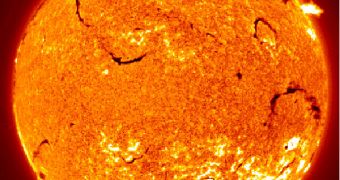A team of astronomers has recently proposed the use of a new criterion for determining what is going on in post main sequence stars. This new piece of data that needs to be considered is extremely relevant for experts in the field, given that the science of stellar evolution is very complex.
Generally, in science, experts tend to interpret each field of research as stream of evidence that points to a single conclusions. For comparison purposes, this type of reasoning would look like a river.
But when it comes to studying what is going on with stars, there are no clear theories. There are of course some ideas on the matter, but the views that prevail in the international astronomical community are in fact various methods of piecing together all the knowledge we have of this process.
This makes analyzing stars more of a troubled sea than a smooth river, experts say, and therefore finding methods of putting some order into the chaos is very important. This is precisely what the new research did.
In the paper, experts propose that one of the necessary conditions for developing models to explain how a star evolves past its main sequence should be that the space object lost a significant amount of mass. Investigators propose at least 0.1 to 0.3 solar masses as a threshold for this classification to work.
The group, which is based at the University of Buenos Aires, was led by expert Mariela Vieytes. Details of the work appear in the online journal arXiv, and have also been accepted for publication in an upcoming issue of the esteemed scientific journal Astronomy & Astrophysics.
The paper also shows that stars need to lose this mass as they undergo their red giant phase. Our Sun, for example, will continuously swell until it becomes such as giant in a few billion years, before shedding its atmosphere and becoming a helium-powered white dwarf.
Experts are convinced that they will be able to find evidence of these phenomena when they analyze the core of globular clusters. These agglomerations of stars should theoretically gather all the gas that is released from dying stars as they shed their atmospheres.
The issue is that searches conducted to find this missing gas have thus far not produced any evidence. So astronomers turned to a new approach, in which they stopped looking for the gas in clusters, and began analyzing the stars themselves.
They proposed that if the velocities developing in their photospheres are higher than the escape velocities needed for matter to escape from the star, then the space body loses mass. This was proven by surveying the Doppler shift of specific absorption lines in stars located in a nearby cluster.
The predictions from the evolutionary model were found to be extremely accurate in predicting the actual mass loss, which means that what is observed in nature is within the boundaries set by the theory, Universe Today reports.

 14 DAY TRIAL //
14 DAY TRIAL //